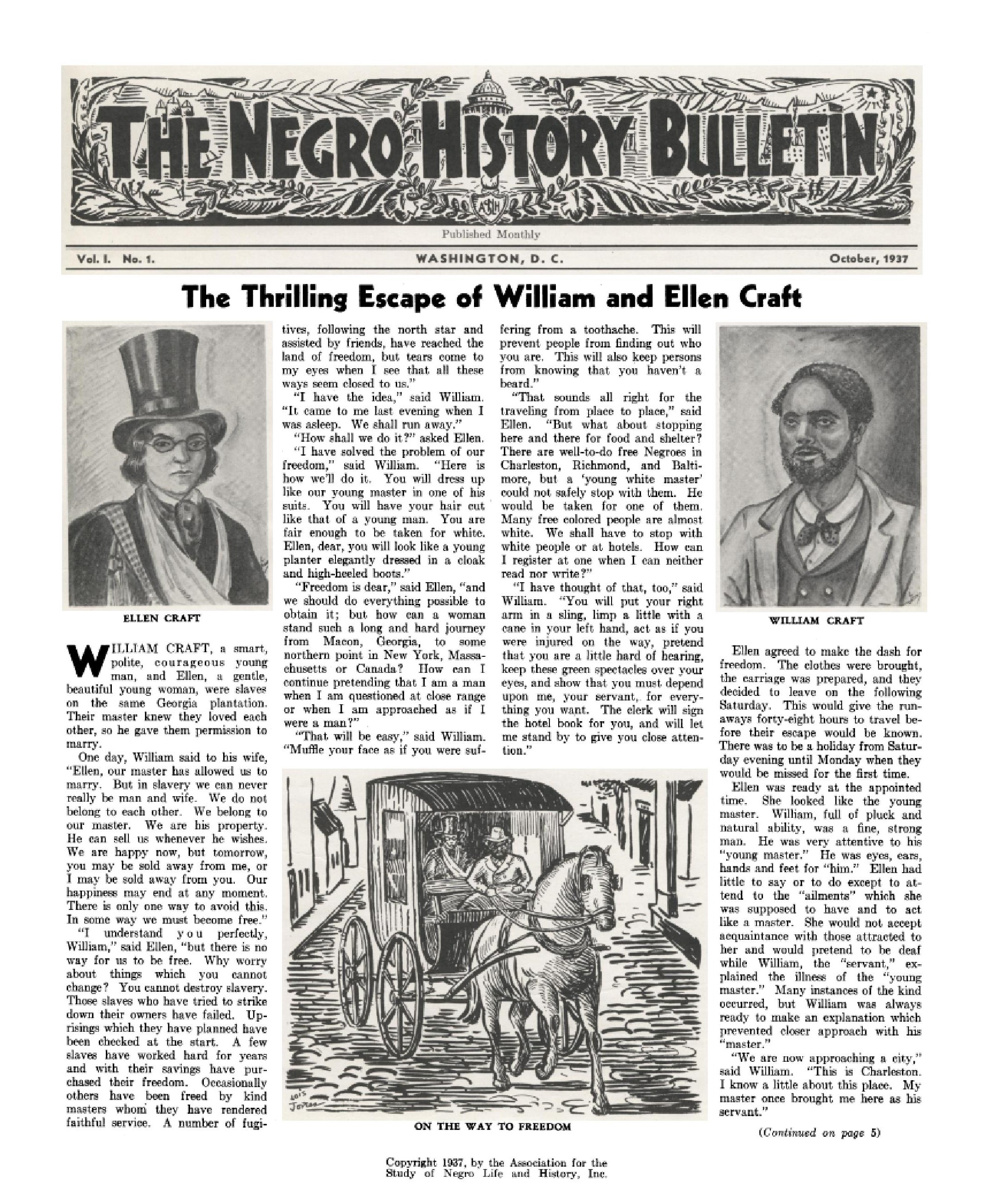
Honoring the Legacy of African American History: From the Underground to Mainstream Impact of Network to Freedom and ASALH
By: Ka'mal McClarin, PhD
In 1915, the Association for the Study of Negro Life and History (ASALH) was created. It flourished over the years, and in February 1926, its founder, Dr. Carter Godwin Woodson, organized a week-long celebration now known as Black History Week. This celebration honored the birth months of President Abraham Lincoln and Frederick Douglass, who was one of the nation's leading abolitionists and a leading conductor of the Underground Railroad.
Woodson, a Harvard-trained historian, was committed to building on the momentum of his organization's success. Together with leading African American scholars, artists, and educators, he then launched the inaugural edition of the Negro History Bulletin in the fall of 1937. This was a groundbreaking creation for its time. Woodson's work was dedicated to educating people about the genuine stories of African Americans woven into the intricate fabric of U.S. history and dispelling misconceptions. He had previously taught at Howard University and the District of Columbia secondary schools.
In its first issue, the Bulletin primarily focused on the Underground Railroad, a movement that played a crucial role in helping enslaved individuals escape and gain their freedom. Woodson, who had a strong desire to uncover untold stories of Black history, launched the Bulletin with a central story that recounted the narrative of "The Thrilling Escape of William and Ellen Craft." This captivating tale chronicled the brave journey of a courageous couple who defied slavery in 1848 Georgia and ultimately found their way to freedom in New England. Accompanied by evocative woodcuts skillfully crafted by Lois Mailou Jones (1905-1998), this story provided an immersive experience. Ellen Craft, who had a fair complexion and was audacious, assumed the guise of a white, Southern, slaveholding gentleman. In contrast, her husband William, who had a darker complexion, portrayed the role of her devoted, enslaved companion. Their escape plan resembled a symphony of cunning, blending seamlessly into the world of white, Southern slaveholding travelers on trains, carriages, and steamers as they embarked on their perilous journey North. The Bulletin proudly proclaimed that "persons still living" bore witness to the profound impact of William and Ellen Craft's saga.[1]
However, the Craft's extraordinary story was just one strand in the rich tapestry of the Underground Railroad. Woodson's inaugural issue also spotlighted other Underground Railroad unsung heroes like William Still and Levi Coffin, who selflessly dedicated their lives to guiding freedom seekers along this treacherous path to liberty.
Fast forward 87 years, and the legacy started by Dr. Woodson's pioneering work has come full circle. The Association for the Study of African American Life and History (ASALH) stands as a steadfast partner alongside the National Park Service's Underground Railroad Network to Freedom program. This partnership not only underscores the historical significance of the Underground Railroad but also pays tribute to the enduring connections and indomitable spirit of Black history. As the Network Freedom Programs prepare for commemorative events during Black History Month, it is essential to spotlight these historic ties. The Underground Railroad's legacy continues to inspire, educate, and resonate, serving as a testament to the unwavering determination of those who forged their path to freedom. It is still an integral strand within the rich tapestry of Black history in America, reminding us of the unbreakable bonds between the past and the present.
[1] McCaskill, Barbara. “The Profits and the Perils of Partnership in the ‘Thrilling’ Saga of William and Ellen Craft.” MELUS, vol. 38, no. 1, 2013, pp. 76–97. JSTOR, http://www.jstor.org/stable/42001205. Accessed 30 Jan. 2024.

Last updated: February 27, 2024
